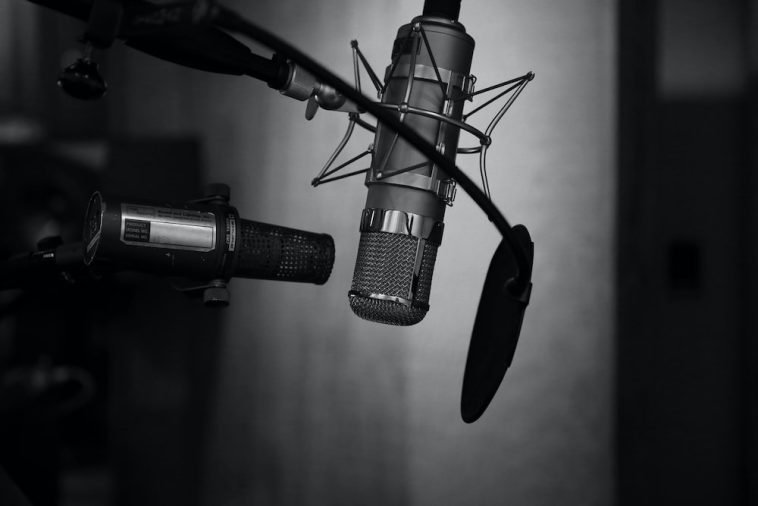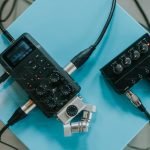Introduction.
Starting a podcast can feel like diving into the deep end, especially when it comes to sound quality. One microphone may work for solo episodes, but if you’re bringing in guests or co-hosts, you’re probably considering using two mics to make everything sound clearer and more balanced.
In this guide, I’ll walk you through the reasons for using two microphones, the equipment you’ll need, setup tips, and troubleshooting common issues.
We’ll also cover the pros and cons of using multiple mics, answer frequently asked questions, and give you some final thoughts on making this setup work seamlessly for your podcast.
Why Use Two Mics for a Podcast?
When you’re hosting a show with another person, a single mic often means one of two things: poor audio quality or a lack of control over each person’s voice volume.
With two microphones, each voice gets its audio channel. This setup makes editing easier and ensures that both voices sound equally clear and loud.
With two mics, you can:
- Avoid awkward leaning and shifting around a single mic
- Separate voice tracks for flexible editing
- Adjust individual volume levels easily
- Create a more professional, studio-like experience for listeners
Essential Equipment for Using Two Mics
Before getting into setup details, let’s go over what you’ll need to record with two mics:
- Two Microphones: Ideally, each mic should be the same model or have similar specifications for consistent sound quality. Condenser or dynamic mics are the most common choices for podcasting.
- Audio Interface or Mixer: You’ll need an interface or mixer with at least two XLR or USB inputs. For XLR mics, the Focusrite Scarlett 2i2 and Behringer UMC202HD are popular options. USB mics are slightly more challenging to work with since most computers have trouble recognizing two identical USB mics without an interface.
- XLR Cables (for XLR mics): These are essential if you’re using an audio interface or mixer, as they connect the mics to your recording setup.
- Recording Software (DAW): Software like Audacity, GarageBand, or Adobe Audition allows you to record and edit audio from two microphones on separate tracks.
- Headphones and Mic Stands: Headphones help monitor audio during recording, and mic stands make positioning the mics easy, allowing for consistent sound quality.
How Do I Use Two Mics For Podcasts?
- Connect Your Mics to the Audio Interface or Mixer
- Plug each XLR mic into a separate input on your audio interface or mixer. If you’re using USB mics, connect them to your computer directly, but be prepared for potential software issues with two USB mics.
- Configure Your Audio Interface Settings
- Adjust input levels for each mic on the interface so they’re balanced. Keep the gain at a moderate level to avoid audio distortion.
- Set Up Your Digital Audio Workstation (DAW)
- Open your recording software and create a new project with two separate audio tracks.
- Assign each track to a different input from your audio interface. For example, Track 1 could capture Mic 1, and Track 2 could capture Mic 2.
- Test the Setup with a Trial Run
- Speak into each microphone individually to check if they’re routed to the correct tracks and ensure both levels are similar.
- Position the Mics Properly
- Place each mic about 6-8 inches from each speaker’s mouth. Adjust based on the mic type and desired sound effect; condenser mics might need slightly more distance.
- Hit Record!
- Record a short test and listen back to make sure everything sounds balanced and clear. Adjust levels if needed, and you’re ready to go!
Pros and Cons of Using Two Mics
Pros:
- Enhanced Audio Control: Individual tracks allow you to adjust each person’s volume, tone, and sound independently.
- Professional Sound Quality: Using two mics eliminates cross-talk and ensures each voice is crisp and clear.
- Better Editing Options: You have more control over editing when each voice has its own track.
Cons:
- Increased Equipment Costs: Buying a second mic, an interface, and extra cables adds to your podcasting budget.
- Setup Complexity: Using two mics involves more setup time and potential technical issues, especially for beginners.
- Learning Curve: It can take time to get comfortable managing multiple tracks during recording and editing.
Common Challenges and Troubleshooting Tips
- USB Mics Not Recognized Separately
If you’re using two USB mics, many computers won’t recognize them individually. You can sometimes work around this by using two different brands or by creating an Aggregate Device on Mac or using software like ASIO4ALL on Windows to combine USB mics as a single device. - Feedback and Echo Issues
Ensure you’re using closed-back headphones to prevent sound from leaking into the mic. Also, place the mics far enough apart to reduce interference. - Volume Imbalance
Adjust the gain levels on the interface for each mic until both are balanced. A trial recording can help you spot any issues before you start.
FAQ
1. Can I use two USB microphones on one computer without an audio interface?
Technically, yes, but it’s tricky. USB mics often conflict, as most computers don’t natively support more than one USB audio input. Mac users can try creating an Aggregate Device, while Windows users may need software like VoiceMeeter.
2. Do I need identical mics for each person?
While not strictly necessary, having the same model or type of mic will create a more uniform sound. If you mix a condenser and a dynamic mic, for example, they’ll pick up sound differently, which may result in inconsistent audio quality.
3. What’s the best audio interface for two mics?
The Focusrite Scarlett 2i2 is one of the most popular choices for podcasters, as it’s reliable, compact, and supports two XLR inputs with independent gain controls. Other options include the Behringer UMC202HD and PreSonus AudioBox USB.
4. Can I record with two mics on my phone?
It’s possible with a compatible audio interface and adapter, though it’s not the most straightforward option. For iOS, interfaces like the iRig Pro Duo work with two XLR mics, and you’ll need a compatible app to record multi-track audio.
Conclusion
Using two mics for your podcast can elevate your sound quality and give listeners a much more enjoyable experience.
From clearer audio to more flexible editing, two microphones allow you to get the best sound possible for co-hosted episodes, guest interviews, and more.
Although it can take a little extra time and effort to set up, the benefits are worth it, especially if you’re serious about producing high-quality audio.
Are you ready to try a two-mic setup for your podcast?





GIPHY App Key not set. Please check settings